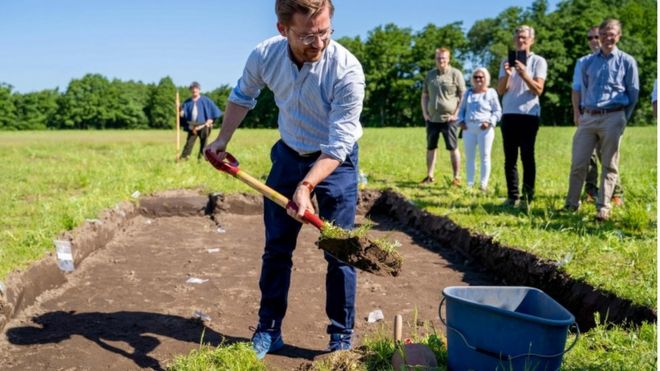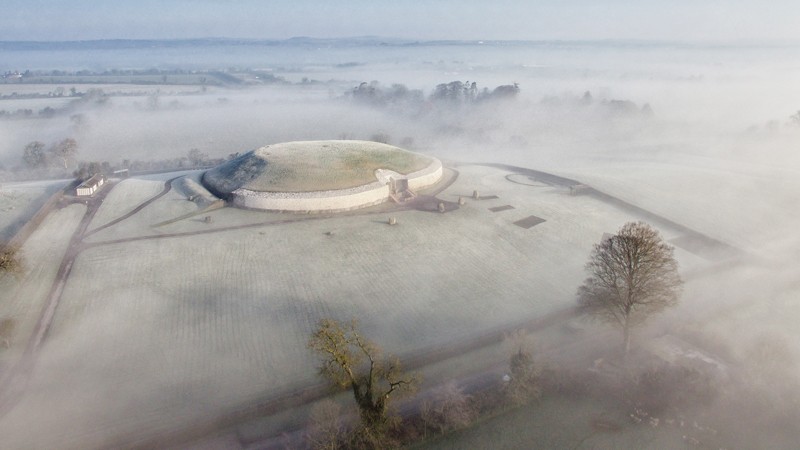A misty morning view of the passage tomb of Newgrange overlooking the Boyne Valley, County Meath, Ireland.
Figure 1 | Newgrange passage tomb, Ireland. Cassidy et al.1 report that the analysis of DNA from a man buried in this 5,000-year-old monument reveals evidence of incest.Credit: Ken Williams/ShadowsandStone.com
A study of the DNA of Ireland’s Stone Age inhabitants has produced spectacular results, with far-reaching consequences for our understanding of prehistoric population movement and the structure of that ancient society. Writing in Nature, Cassidy et al.1 report their striking discoveries from this project.
The authors looked at the period, around 4000 BC, when farming appeared as a new, Neolithic way of life, supplanting the older and more mobile Mesolithic lifestyle based on fishing, hunting and foraging for wild foods. Cassidy et al. examined the social structures of these farming communities over the following 1,500 years, focusing on the people buried in passage tombs — a type of monument featuring a chamber, covered by a mound, that is entered along a passage. The most famous Irish passage tomb is the enormous monument at Newgrange (Fig. 1), which is part of a World Heritage site of the United Nations Educational, Scientific and Cultural Organization. This huge circular mound is one of three major tombs built in the Brú na Bóinne cemetery complex in County Meath, north of Dublin, in eastern Ireland.
Read the paper:
A dynastic elite in monumental Neolithic society
Newgrange was constructed between around 3200 and 3000 BC. It was built using sophisticated engineering to ensure that, at the end of a long, stone-lined passage, a burial chamber is lit up for a few minutes every year by the rays of the rising Sun, on and around the shortest day of the year. The monument pre-dates, by around 500 years, the huge trilithon stones at Stonehenge, which align to the winter and summer solstices. Marking the winter solstice was crucial for early farmers, who needed to know when the days would start to get longer. It took a massive effort to build Newgrange, and archaeologists think it was constructed as a burial place for a wealthy and powerful elite. People probably journeyed there from far and wide to participate in major solstice-marking ceremonies. Perhaps this elite claimed to have divine power by ‘controlling’ the Sun’s movement2.
Read the rest of this article...




















